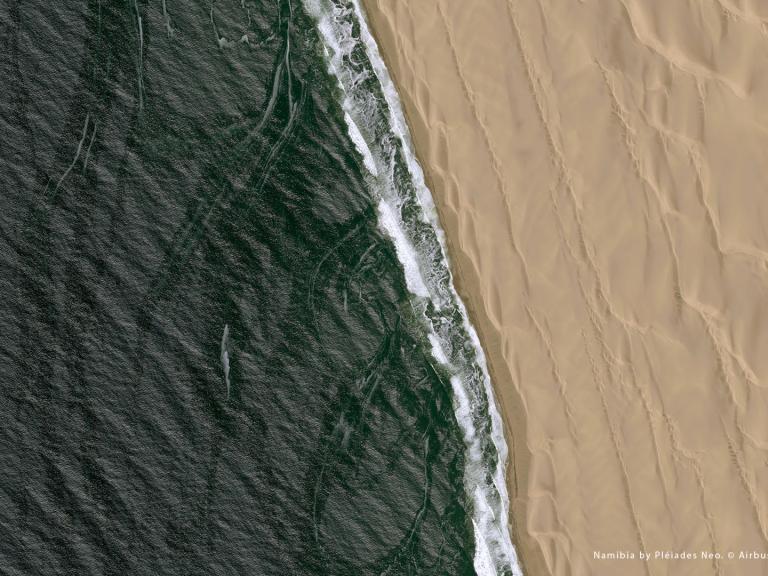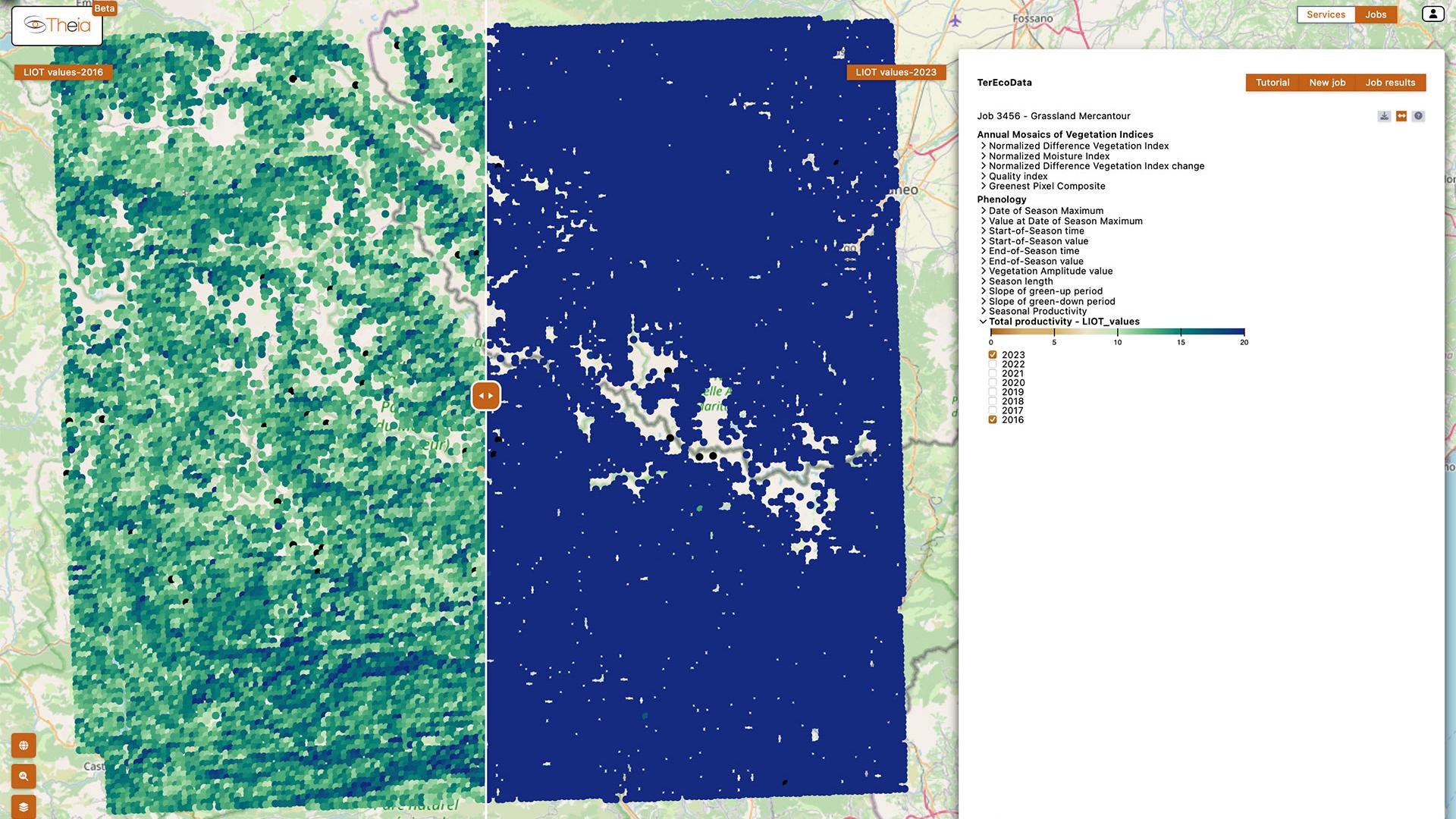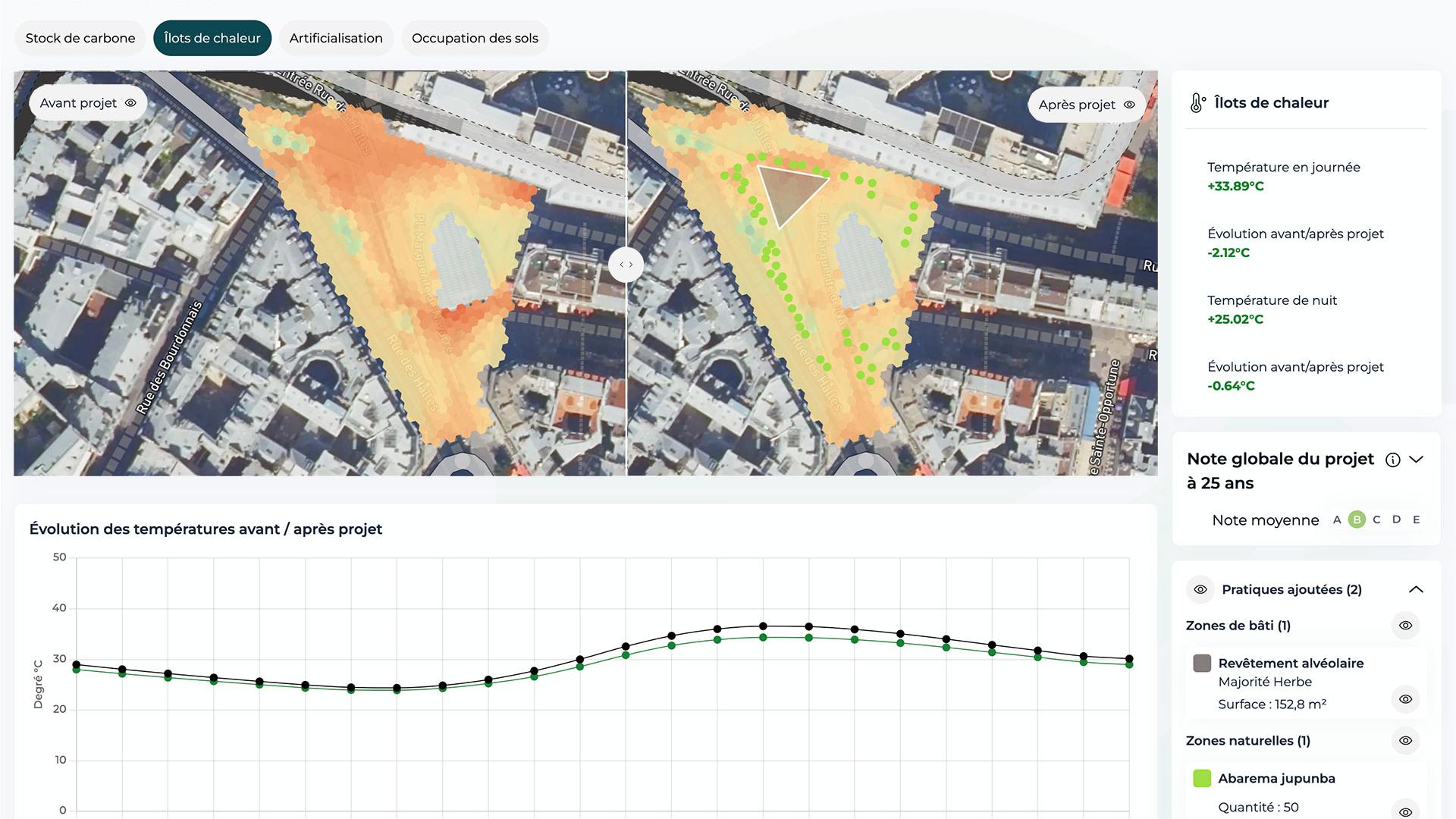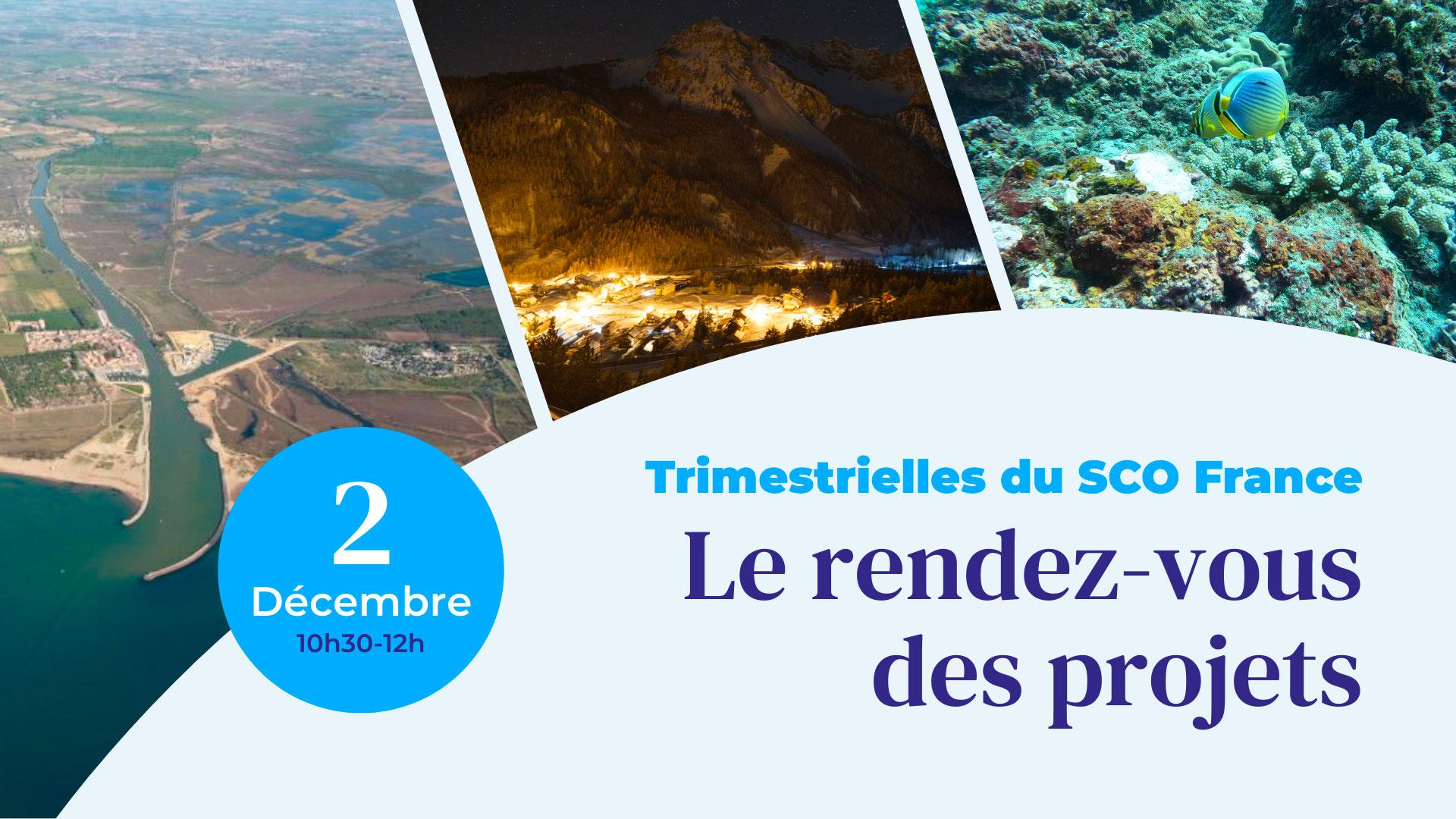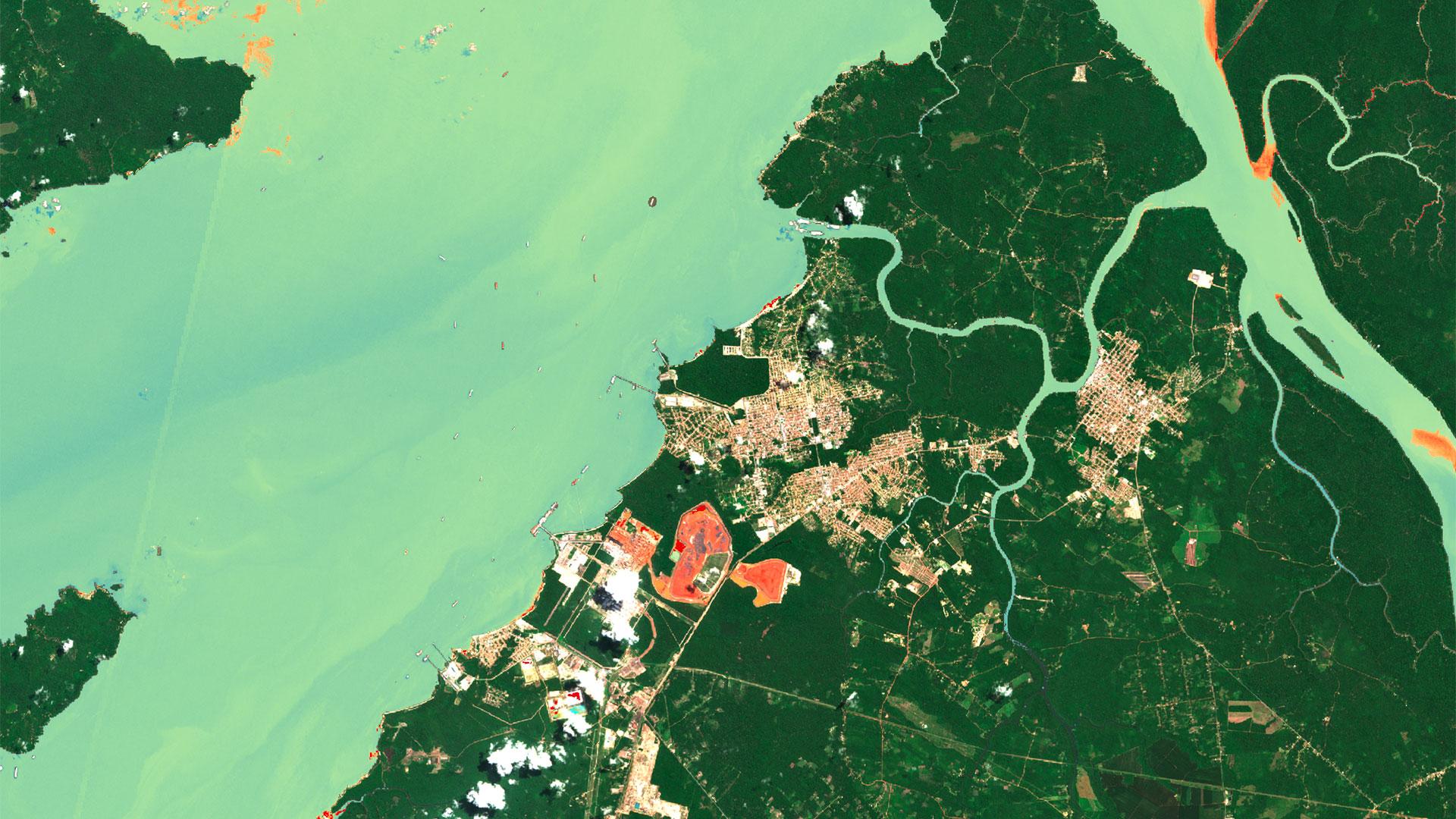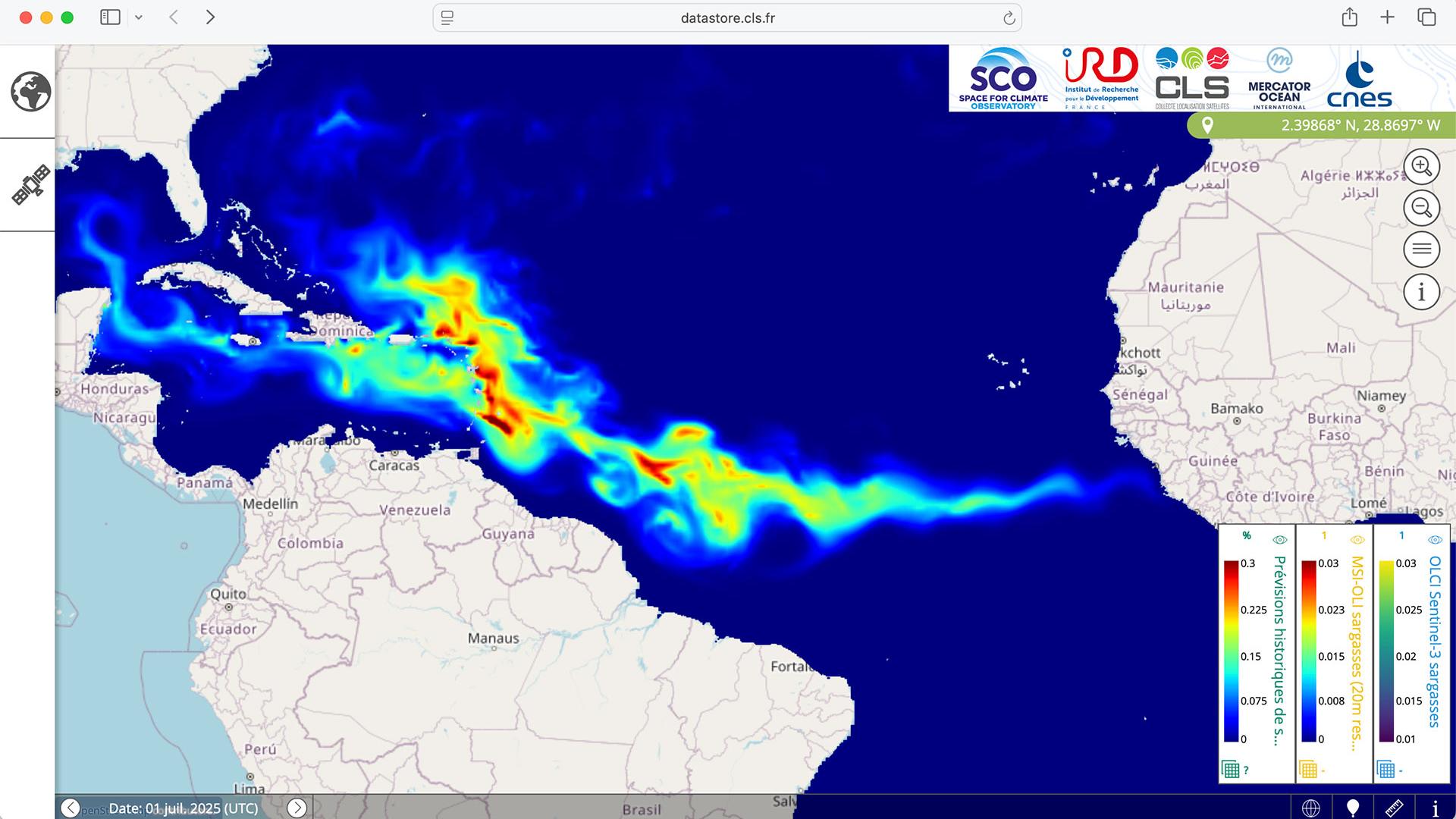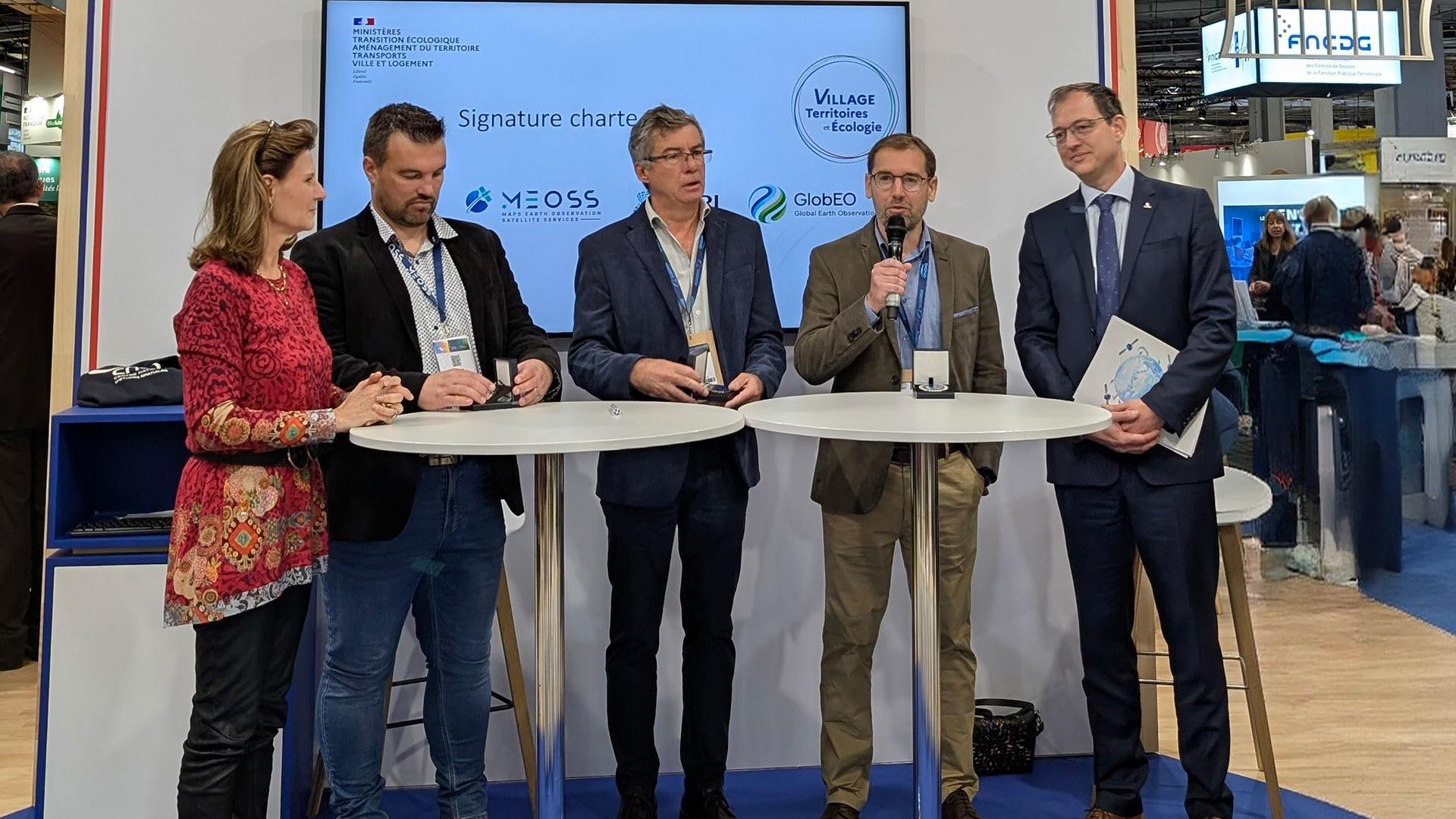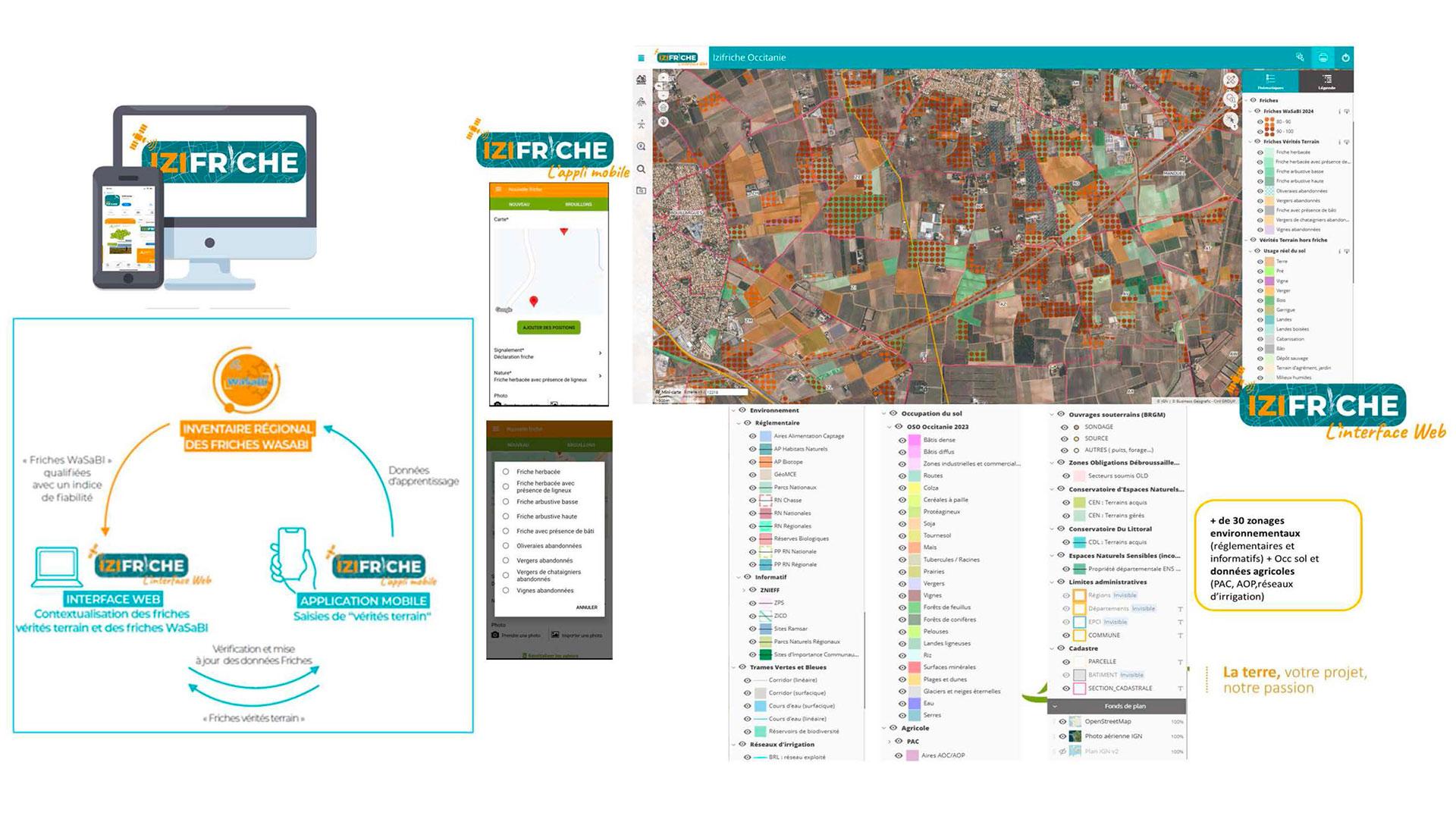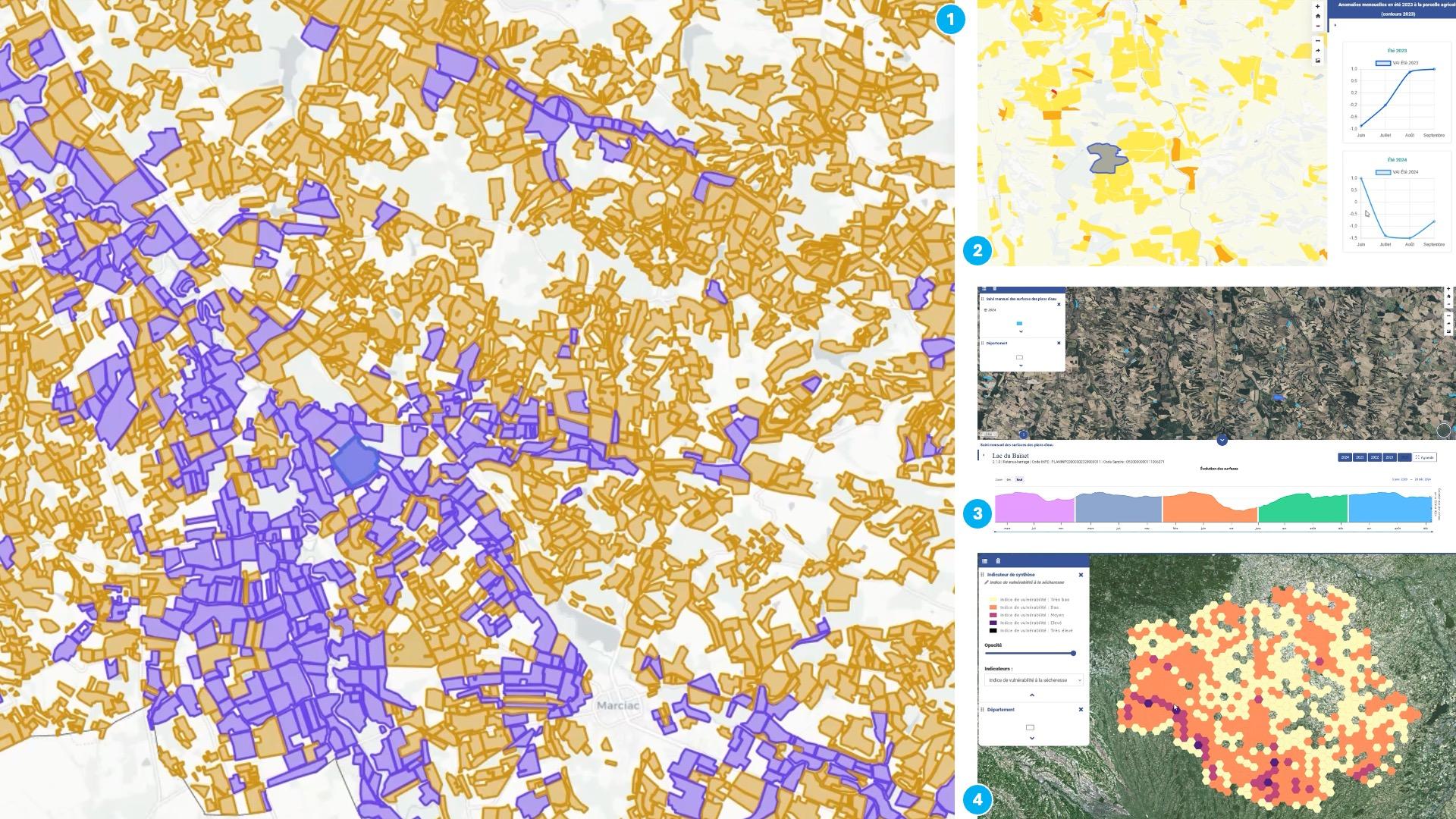TerEcoData, an on-demand web service for monitoring ecological changes on land
Are your grasslands remarkable? What is the state of biodiversity in your forest, and can its evolution be monitored over time? Developed as part of the SCO EO4MP project and hosted on Theia, TerEcoData offers field workers an advanced ecological monitoring solution using Sentinel-2 satellite data to track changes in landscapes and their biodiversity.
Learn more ➔Target 2050: building tomorrow's world today
What if every development project became part of the French national climate plan? With Target 2050, Netcarbon helps local authorities design projects that are aligned with France's 2050 objectives: carbon neutrality, zero net artificialization and heat resilience. The key? Simulating projects and assigning them a clear and realistic climate performance rating. Definitely worth checking out.
Learn more ➔19th Quarterly Meeting of SCO France
Quality of night-time lighting, resilience to alternating drought and runoff, preservation of coastal biodiversity: these are very different topics, but they all benefit from satellite data. On Tuesday 2 December 2025, during the 19th SCO France Quarterly Meeting, three SCO projects presented their space-based solutions to these major challenges.
Learn more ➔XtremQuality presents its water quality monitoring solution at COP30
As water resource management becomes central to strategies for adapting and building resilience to droughts and extreme events, the use of spatial data is becoming critical in combating the effects of climate change. The SCO XtremQuality project demonstrated this at COP30 on 10 November 2025.
Learn more ➔Thanks to SeSaM, Europe now has a tool for monitoring and forecasting sargassum
With global warming, Sargassum seaweed is becoming increasingly invasive. On both sides of the Atlantic, it is becoming necessary to monitor its huge banks and anticipate its strandings. Thanks to the support of the SCO, the SeSaM project partners have finalized a robust solution whose data is highly regarded by the Copernicus Marine Service.
Learn more ➔3 companies sign the SCO Charter
Leading several flagship SCO projects, ACRI-ST, GlobEO and MEOSS are the first three companies to sign the SCO Charter. In doing so, they formalize their commitment to the alliance's values: sharing, cooperation, action and transparency. By opening up to the private sector, the SCO is recognizing the role and dynamism of companies in implementing operational solutions for climate adaptation.
Learn more ➔Izifriche®: the 2024 inventory of agricultural wastelands in Occitania is now available
Made operational thanks to the SCO FrichesAgricoles project, the Izifriche® solution is improving and becoming more reliable. In October 2025, Safer Occitanie revealed the 2024 inventory of agricultural wasteland in the 13 departments of its region. The result: 150,000 hectares of "WaSaBI wasteland" identified, representing 2.6% of the usable agricultural area (UAA) in the Franch Occitania region.
Learn more ➔EO4AgriWater: Satellite innovation at the service of agriculture and water
Faced with the climate emergency and increasing episodes of drought, the EO4AgriWater project marks another step towards smart water management in agriculture. Combining the expertise developed in three previous SCO projects, the tool developed enriches MEOSS's MEO-WaterManagement solution. Find out more!
Learn more ➔-
EO4MP
TerEcoData, an on-demand web service for monitoring ecological changes on land
Are your grasslands remarkable? What is the state of biodiversity in your forest, and can its evolution be monitored over time? Developed as part of the SCO EO4MP project and hosted on Theia, TerEcoData offers field workers an advanced ecological monitoring solution using Sentinel-2 satellite data to track changes in landscapes and their biodiversity.
Learn more ➔Target 2050Target 2050: building tomorrow's world today
What if every development project became part of the French national climate plan? With Target 2050, Netcarbon helps local authorities design projects that are aligned with France's 2050 objectives: carbon neutrality, zero net artificialization and heat resilience. The key? Simulating projects and assigning them a clear and realistic climate performance rating. Definitely worth checking out.
Learn more ➔Quarterly 1919th Quarterly Meeting of SCO France
Quality of night-time lighting, resilience to alternating drought and runoff, preservation of coastal biodiversity: these are very different topics, but they all benefit from satellite data. On Tuesday 2 December 2025, during the 19th SCO France Quarterly Meeting, three SCO projects presented their space-based solutions to these major challenges.
Learn more ➔XtremQualityXtremQuality presents its water quality monitoring solution at COP30
As water resource management becomes central to strategies for adapting and building resilience to droughts and extreme events, the use of spatial data is becoming critical in combating the effects of climate change. The SCO XtremQuality project demonstrated this at COP30 on 10 November 2025.
Learn more ➔SeSaMThanks to SeSaM, Europe now has a tool for monitoring and forecasting sargassum
With global warming, Sargassum seaweed is becoming increasingly invasive. On both sides of the Atlantic, it is becoming necessary to monitor its huge banks and anticipate its strandings. Thanks to the support of the SCO, the SeSaM project partners have finalized a robust solution whose data is highly regarded by the Copernicus Marine Service.
Learn more ➔Charter Signatures3 companies sign the SCO Charter
Leading several flagship SCO projects, ACRI-ST, GlobEO and MEOSS are the first three companies to sign the SCO Charter. In doing so, they formalize their commitment to the alliance's values: sharing, cooperation, action and transparency. By opening up to the private sector, the SCO is recognizing the role and dynamism of companies in implementing operational solutions for climate adaptation.
Learn more ➔SCO FrichesAgricolesIzifriche®: the 2024 inventory of agricultural wastelands in Occitania is now available
Made operational thanks to the SCO FrichesAgricoles project, the Izifriche® solution is improving and becoming more reliable. In October 2025, Safer Occitanie revealed the 2024 inventory of agricultural wasteland in the 13 departments of its region. The result: 150,000 hectares of "WaSaBI wasteland" identified, representing 2.6% of the usable agricultural area (UAA) in the Franch Occitania region.
Learn more ➔EO4AgriWaterEO4AgriWater: Satellite innovation at the service of agriculture and water
Faced with the climate emergency and increasing episodes of drought, the EO4AgriWater project marks another step towards smart water management in agriculture. Combining the expertise developed in three previous SCO projects, the tool developed enriches MEOSS's MEO-WaterManagement solution. Find out more!
Learn more ➔



